To enjoy fresh cucumbers as early as possible, it is essential to consider their heat-loving nature. The crop is highly sensitive to temperature conditions, meaning a quick harvest can only be achieved in protected soil.

Cucumber seeds begin to germinate at soil temperatures above 15°C, with the fastest growth occurring at 23-26°C. In open ground, suitable temperatures for seedlings are established only in late May – June, and no region is immune to spring frosts. Therefore, there is no alternative to greenhouse cultivation.
There are two ways to grow cucumbers in protected soil: direct sowing into the ground and through seedlings. The seedling method significantly accelerates fruiting. The first cucumbers can be harvested at the beginning of summer, several weeks earlier than with traditional June sowing in the ground. What steps need to be taken for this?
Preparing Soil for Cucumbers

Sowing cucumber seedlings should begin 3-4 weeks before the planned transplant into the greenhouse:
- For southern regions – early March.
- For central regions – mid-April.
- For northern regions – early May.
Before sowing, the soil must be properly prepared. Cucumbers are demanding and prefer fertile soil rich in organic matter. High-quality substrate preparation is essential for healthy seedlings.
There are two ways to prepare soil:
- Buy ready-made seedling soil or pumpkin crop soil.
- Make the substrate yourself.
To prepare soil, mix deacidified peat with biohumus or high-quality humus in equal parts. To improve structure, add aerating components (perlite, vermiculite, or diatomite) in the amount of 10-15% of the total mixture volume. This ensures the necessary air permeability and moisture retention.
Disease Prevention

This is a key step in soil preparation. To prevent root rot and other diseases, beneficial microflora must be activated. After filling seedling containers with the prepared soil, treat them with Trichoderma-based preparations.
Proper Seed Treatment and Sowing
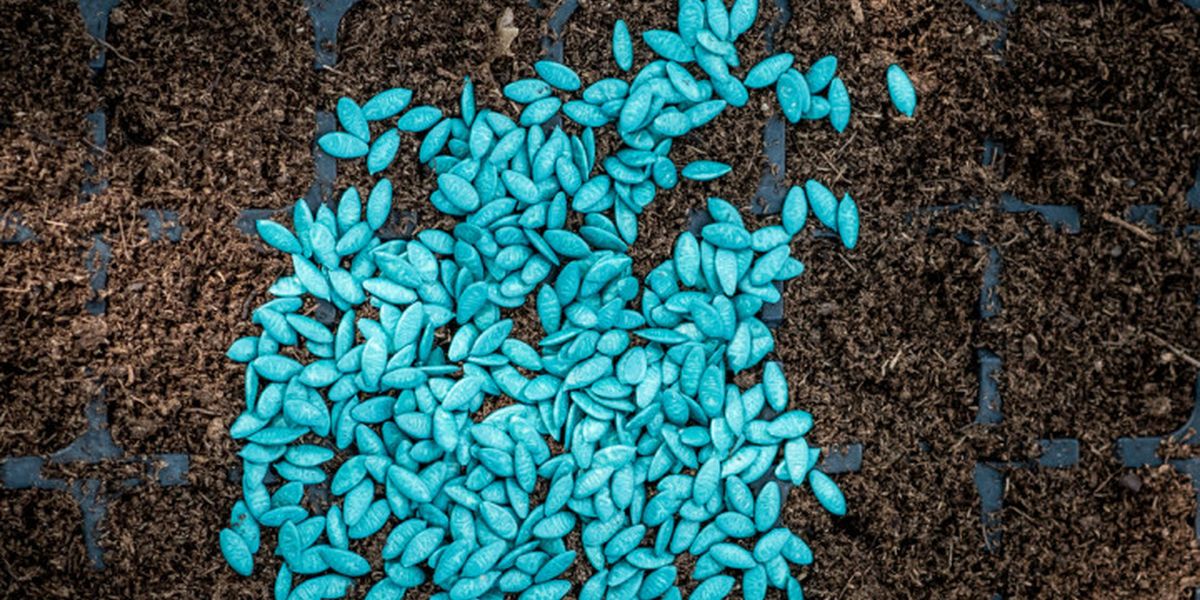
Nowadays, brightly colored seeds are often found on the market – this is treated seed material that has already been processed with fungicides (confirmed by a label on the package). Such seeds do not require additional preparation – they can be sown dry, without soaking or pre-germination.
If using regular seeds, especially self-collected ones, pre-sowing treatment is crucial. First, disinfect the seeds by soaking them for 30-60 minutes in a biofungicide solution (such as Fitosporin-M).
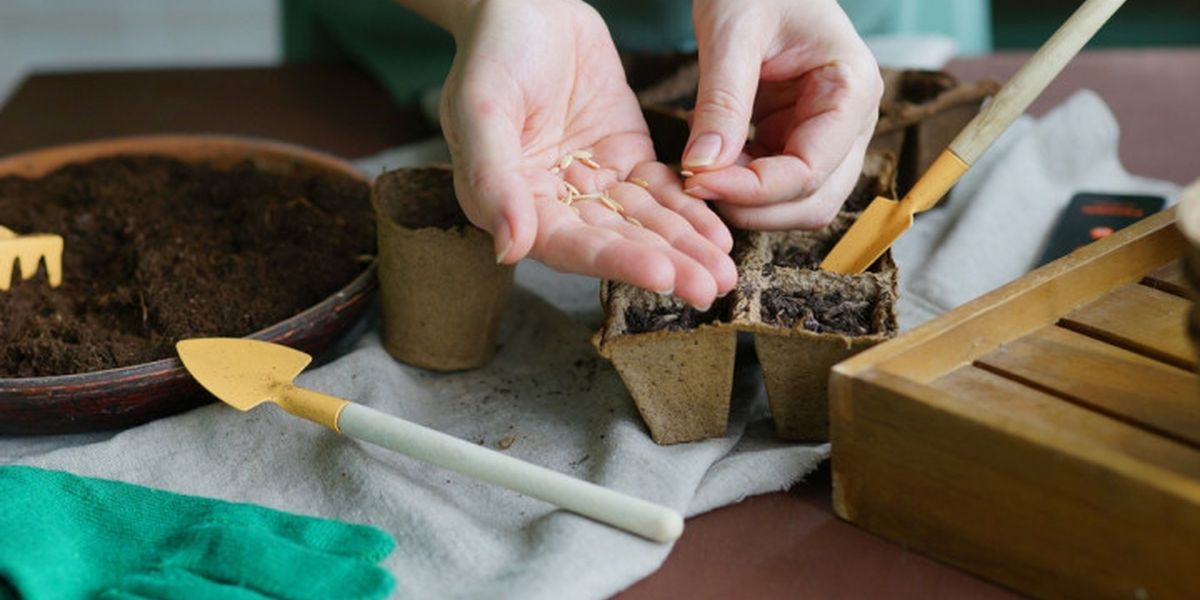
After disinfection, seeds can be sown directly into prepared soil or pre-germinated. In the second case, wrap them in moist fabric or gauze, or place them between water-soaked cotton pads, then store them in a warm place. In 2-3 days, the seeds will sprout and be ready for planting.
Containers should be filled with pre-moistened soil mixture. Seeds are planted 1.5-2 cm deep, lightly covered with soil, and sprayed with room-temperature water. To create optimal germination conditions, cover the containers with plastic wrap, forming a mini-greenhouse. Keep them in a warm place at 24-26°C until sprouts appear.
Seedling Care
Caring for cucumber sprouts starts with proper removal of the cover. Once sprouts appear, gradually remove the plastic or bag, beginning with 30-minute airing sessions and increasing time daily. Containers should be placed in a bright area, protected from direct sunlight and drafts.
Temperature Control
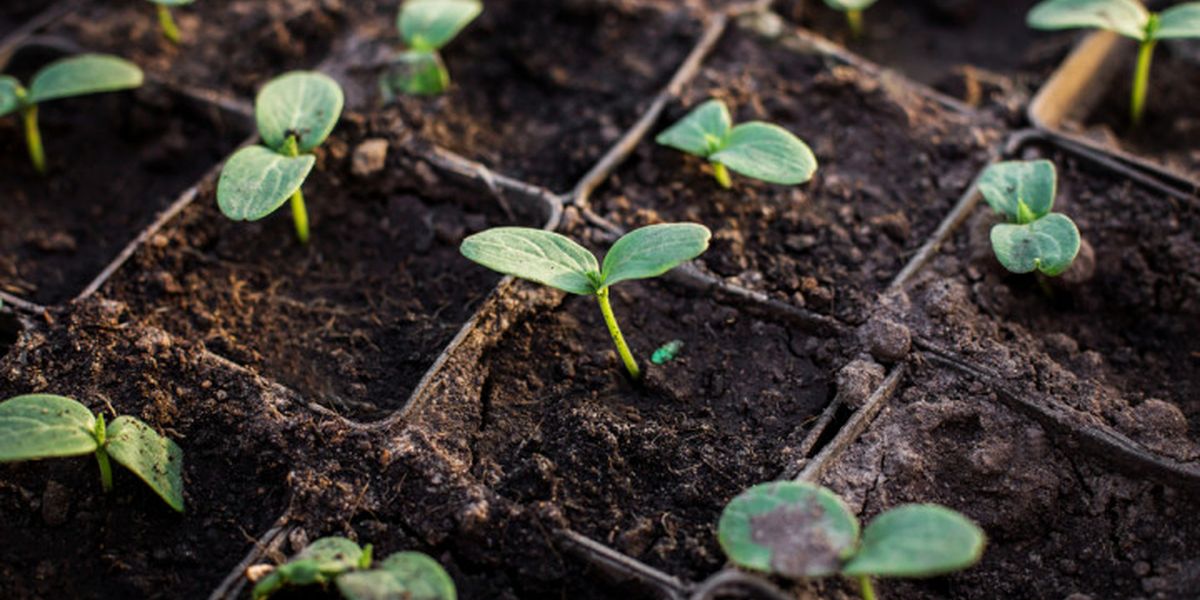
An important stage in seedling cultivation is hardening. To prevent excessive stretching, a special temperature scheme is used:
- After cotyledon leaves open, lower the temperature to 18-20°C during the day and 15-17°C at night for one week.
- After this, gradually increase temperatures to optimal levels: 20-23°C during the day and 18-20°C at night.
Pay close attention to protecting the root system from cold, as low temperatures can trigger root rot. It’s recommended to regularly check soil temperature with a thermometer, whether containers are placed on a windowsill or a dedicated stand.
Supplemental Lighting
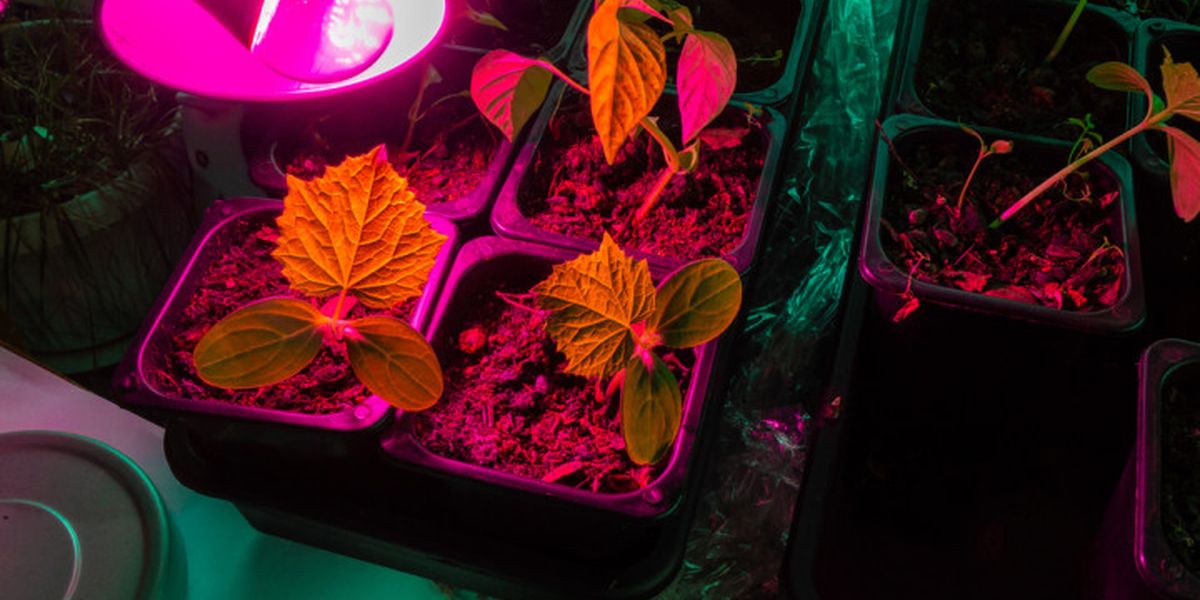
Light is critical for healthy cucumber seedlings. For proper development, plants need at least 16-18 hours of daylight. If sowing is done in March or April, natural sunlight is insufficient—supplementation with special grow lamps is required. Position them 15-20 cm above the leaves to prevent burns.
Watering and Fertilization
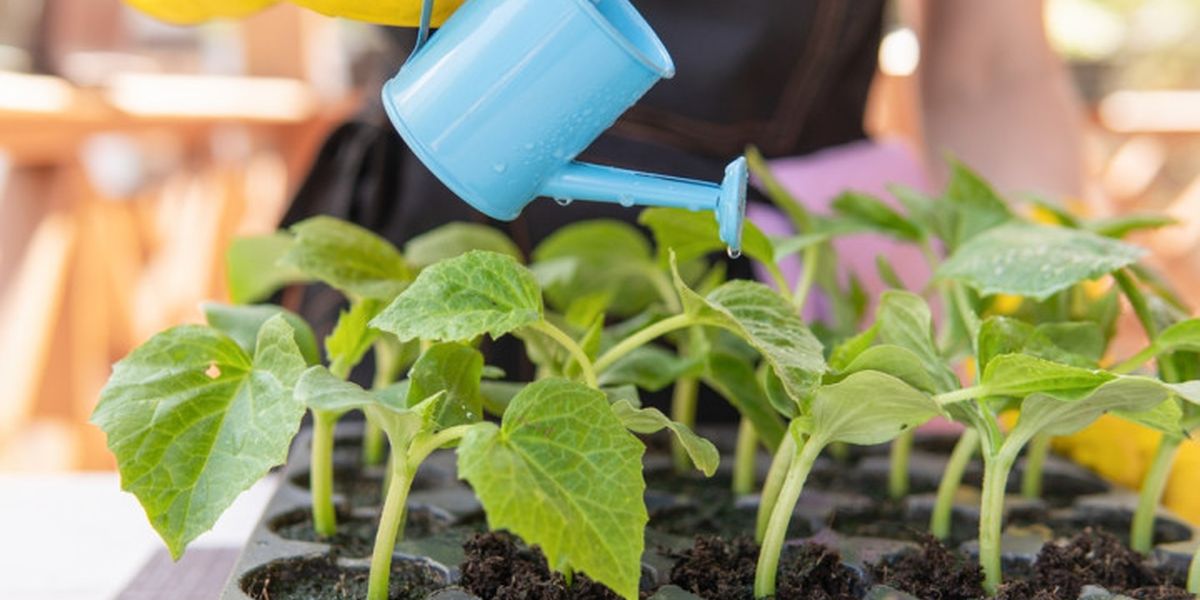
In the first days after sprouting, a gentle watering method is recommended—carefully apply water near the roots using a bulb syringe or dropper. Later, when cucumber seedlings develop stronger root systems, bottom watering (through trays) is allowed.
The first fertilization occurs 14 days after sprouting, or right after the first true leaf appears. The best choice is liquid organic-mineral fertilizers. Pre-transplant fertilization is done 7 days before moving seedlings to a greenhouse or larger containers. At this stage, use phosphorus-dominant fertilizers. Always follow dosage instructions—excessive fertilizer can negatively affect young plants.
Transplanting Cucumbers into Soil or Large Containers

Seedlings can be moved to the greenhouse once the topsoil reaches 14-15°C and the risk of late frosts has passed. Planting in cold soil may kill plants, so to speed up soil warming, pour hot water over the soil and cover it with plastic for a few days. Before planting, introduce beneficial microflora to the bed using EM-preparations (Baikal-EM1).
One week before transplanting, begin hardening seedlings. This increases stress resistance, helps faster root adaptation, and reduces disease risks. On sunny days, open windows, or move seedlings to a balcony or greenhouse, gradually adjusting them to temperature variations and direct sunlight.
Gradually increase their exposure time outdoors while lowering night temperatures. Two days before transplanting, seedlings can stay overnight in the greenhouse—covered with fleece fabric to protect them from night chills.
After transplanting, seedlings should remain covered using fleece fabric stretched over hoop supports—this prevents cold damage and ensures uninterrupted vegetative growth.
Watering and Fertilization for Cucumbers in the Greenhouse
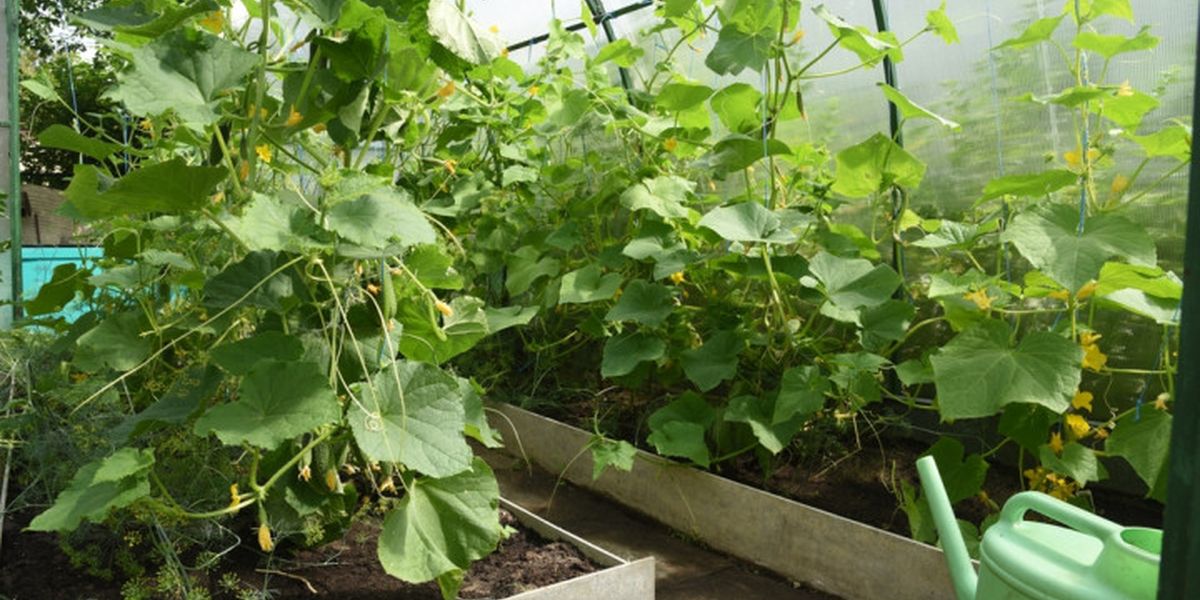
Cucumber watering should be frequent and abundant, ensuring moisture reaches at least 20 cm deep into the soil. During hot and dry weather, watering is needed every 2-3 days. During cool and cloudy days, watering 1-2 times per week is sufficient. Mulching with straw or cut grass helps maintain optimal soil moisture levels.
Throughout growth and fruiting, continue fertilizing cucumbers every 2-3 weeks (especially those grown in limited soil volume). The best results come from alternating organic and mineral fertilizers.
During cold spells, it’s better to use foliar fertilization, since in cold soil, the root system has reduced nutrient absorption.
Trellising and Vine Shaping
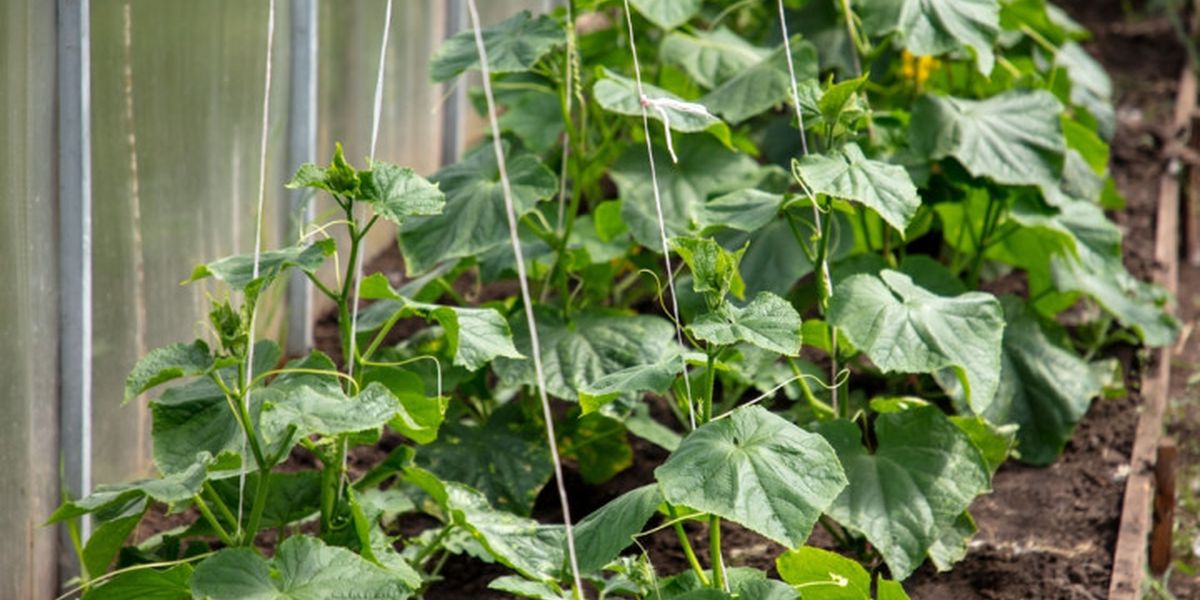
For healthy plants and high productivity, proper vine formation and trellising are essential—especially in a small greenhouse space. For parthenocarpic cucumber varieties, the main stem is pinched once it reaches or surpasses the trellis height (usually around 2 meters). Side shoots must be trimmed, leaving 25 cm in the lower part, 35-40 cm in the middle, and 45-50 cm at the top.
To improve air circulation and disease prevention, remove shoots and flowers in the first five leaf axils. Heavy fruiting vines should be secured on strong trellises—this enhances light access, improves airflow, and prevents stem breakage under fruit weight.
Write a comment